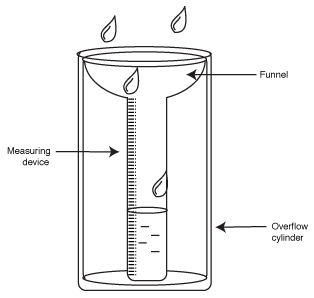Why Every Homeowner Must Think About Purchasing a High-Accuracy Rain Gauge
Why Every Homeowner Must Think About Purchasing a High-Accuracy Rain Gauge
Blog Article
Revealing the Scientific Research Behind Rain Determines: Just How These Tools Play a Vital Role in Climate Study and Environmental Monitoring
Rain determines, seemingly basic devices, hold a profound relevance in the realm of environment research and environmental tracking. These simple tools silently accumulate one of nature's most essential aspects-- rains. Behind their plain exterior exists an intricate science that is crucial for understanding the characteristics of our environment. As we peel off back the layers of this clinical veil surrounding rain determines, we discover a globe where accuracy, information precision, and thorough monitoring converge to unveil a deeper understanding of our changing climate and its effect on the planet.
Importance of Rain Gauges
Rain gauges play an indispensable duty in surveillance and determining rainfall degrees, supplying essential information for climate research study and analysis. These devices are basic in measuring the amount of rainfall that happens in a particular location over a certain duration. By collecting and measuring rainwater, rainfall assesses offer useful understandings into the circulation and strength of precipitation, assisting meteorologists, hydrologists, and climatologists in understanding climate patterns and fads.
Furthermore, long-lasting information accumulated from rainfall assesses assists in evaluating environment adjustment influences and patterns, contributing considerably to scientific study and decision-making procedures. In essence, rain gauges serve as necessary devices in the area of weather forecasting and environmental science, playing a vital function in progressing our understanding of weather condition and climate dynamics.
Types of Rain Gauges
Capability and Procedure
In the realm of climate research study and atmospheric studies, the performance of rainfall determines lies in their elaborate capability and specific functional devices. Rainfall determines are developed to accurately gauge the quantity of precipitation that tips over a details location throughout a set period. These gadgets commonly include a funnel that accumulates rain and networks it right into a determining tube. The gauging tube is noted with adjusted dimensions that permit the precise metrology of rainfall.
The performance of rainfall gauges is based upon the concept of collecting and determining rain in a standardized manner. This accumulated information is crucial for recognizing regional climate patterns, tracking long-term climate fads, and analyzing environmental influences. To ensure precise measurements, rain determines demand to be purposefully placed in open areas far from obstructions such as structures or trees that might hinder the collection procedure.
The operational aspect of rainfall determines entails routine upkeep to avoid debris buildup, calibration checks to preserve measurement precision, and information recording for analysis (rain gauge). In general, the capability and procedure of rain gauges are crucial for collecting dependable rainfall data crucial to environment research study and environmental tracking
Duty in Climate Study
Given the crucial significance of exact precipitation measurements in comprehending climate patterns and environmental effects, the role of rainfall gauges in climate research is vital. Rain gauges offer crucial data for environment research study by quantifying the amount of rainfall see here now that falls over a particular area during an offered period. This information is essential for keeping track of lasting trends in precipitation patterns, assessing the impact of environment modification on rainfall distribution, and enhancing environment designs.

Environment scientists make use of data gathered from rainfall evaluates to examine variants in precipitation degrees, recognize local climate patterns, and evaluate the performance of water source administration techniques. By contrasting historical rainfall information with present measurements, scientists can detect changes in precipitation patterns, such as adjustments in the regularity or strength of rains occasions. This information is important for comprehending exactly how environment adjustment is affecting rainfall dynamics and can help policymakers make informed decisions pertaining to adjustment and Go Here mitigation approaches.
Applications in Ecological Surveillance

In flood projecting, rainfall gauge data helps to track rains intensity and circulation, permitting authorities to provide timely warnings and take needed actions to mitigate flood risks (rain gauge). Drought tracking relies upon rainfall scale data to evaluate dampness degrees in the soil and track rainfall deficits, aiding in the identification of drought-prone areas and the implementation of drought reaction approaches
In addition, rain scale data plays a vital role in water source management by offering info on water availability and usage trends. Additionally, in farming, rainfall gauge information helps farmers in optimizing watering routines, crop selection, and total ranch management practices based on regional rainfall patterns.
Final Thought
Finally, rainfall determines are necessary tools for determining precipitation, providing important information for environment research study and ecological monitoring. With different types and functionalities, rainfall evaluates play a critical duty in recognizing precipitation patterns and their influence on the atmosphere. By precisely measuring rains, these gadgets add to the advancement of scientific expertise and assistance in making notified choices pertaining to water resource management and disaster readiness.
Rainfall evaluates play an essential role in monitoring and determining precipitation degrees, offering necessary information for environment research study and analysis. The basic see it here rain scale, known as the "tipping bucket" scale, is one of the most frequently used tools. Ultrasonic rainfall evaluates use audio waves to find the existence of rainfall, giving real-time information on precipitation levels.Climate researchers make use of data collected from rainfall assesses to evaluate variants in precipitation degrees, determine regional environment trends, and review the efficiency of water source administration techniques.In verdict, rainfall evaluates are essential tools for measuring precipitation, providing useful data for environment research and environmental surveillance.
Report this page